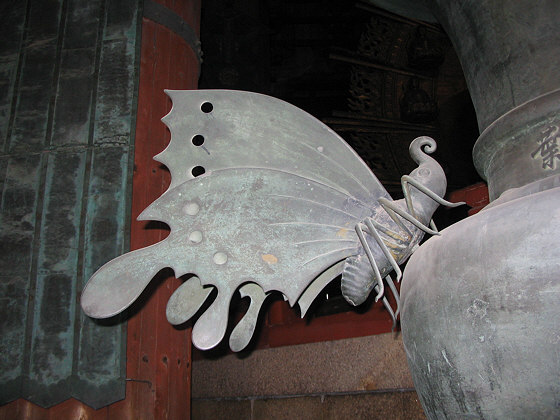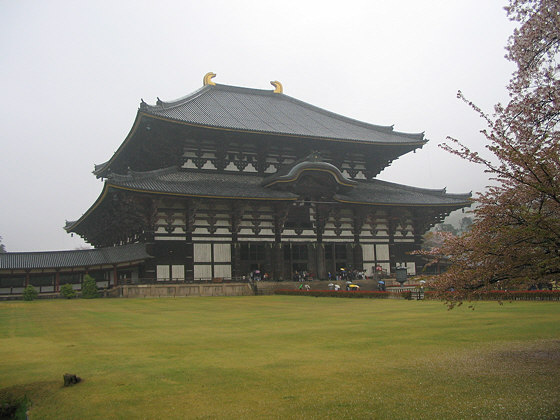Todai-ji Temple, Nara
Constructed in 752 on the order of Emperor Shomu, Todai-ji Temple's Great Buddha Hall in Nara is the largest wooden structure in the world and houses an immense statue of Rushana Butsu.

Todai-ji Temple's huge Daibutsuden is now two-thirds of its original size.
The Daibutsu Hall contains this 14.84 metre bronze statue of the "Cosmic Buddha" (Mahavairocana), later known as Dainichi Nyorai in Japan's esoteric Buddhism.

The Great Buddha (Daibutsu) at Todai-ji Temple.
The Great Buddha (Daibutsu) weighs 500 metric tonnes.

The Great Buddha (Daibutsu) at Todai-ji Temple.
In 784, Emperor Kammu moved the capital from Heijo-kyo (Nara) to Nagaoka and then Heian-kyo (Kyoto) to escape the meddlesome influence of the powerful Nara temples on affairs of state. However, Todai-ji Temple had close links with the imperial family and nearby Kofuku-ji was the clan temple of the powerful Fujiwaras, so both continued to exert some influence on the court. Todai-ji was one of the Seven Great Temples of Nara, which flourished before the capital was moved and remained influential for centuries.

Ornamental butterfly on the huge lotus vase in Todaiji Temple's main hall.
The Daibutsu Hall contains a number of important sculptures and more can be found at the temple's nearby Hokkedo (Lotus Hall) and Kaidan-in (Ordination Hall).

Todaiji Temple's statue of Komoku-ten, the Guardian King of the South, holding a writing brush and scroll symbolizing the copying of sutras.

One of the nio guarding Todaiji Temple.

Todaiji Temple's Daibutsu Hall in the rain.

View from the entrance of Todaiji Temple's Daibutsu Hall.

Nyorin Kannon in Todaiji Temple's Daibutsu Hall.

Crows in the Deer Park outside Todaiji Temple.


